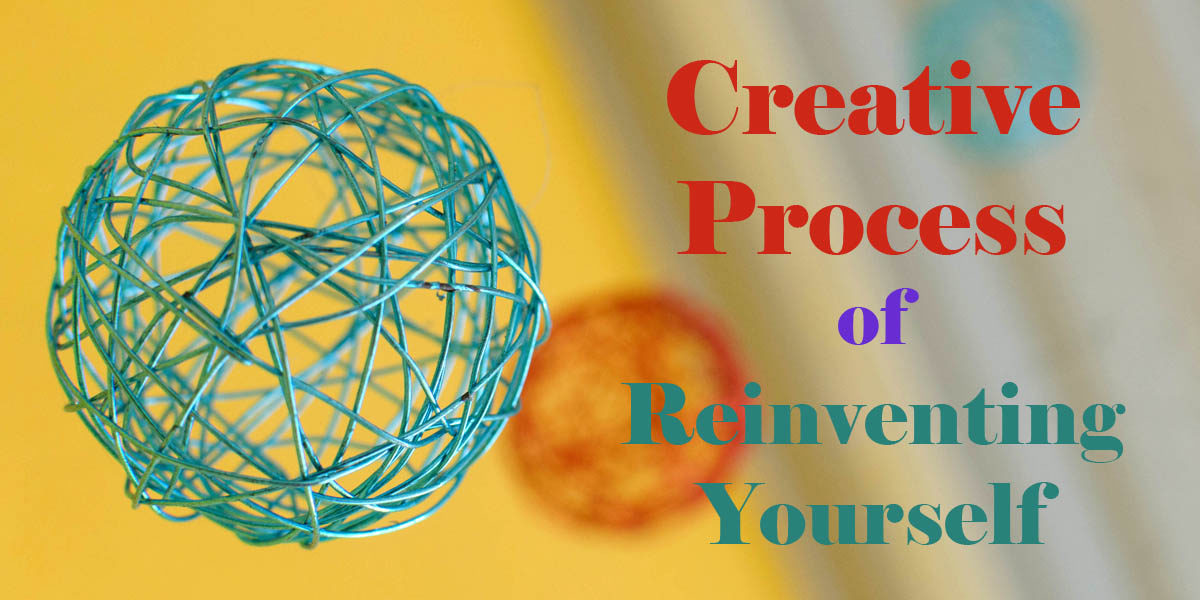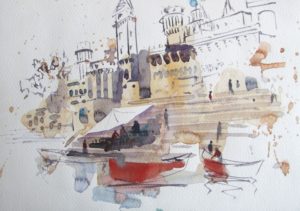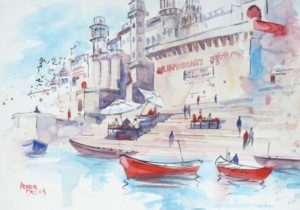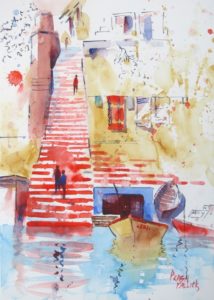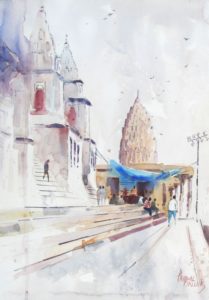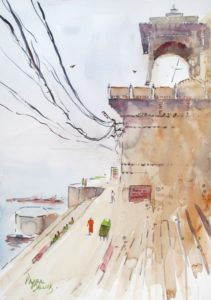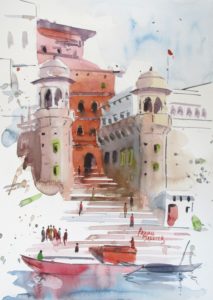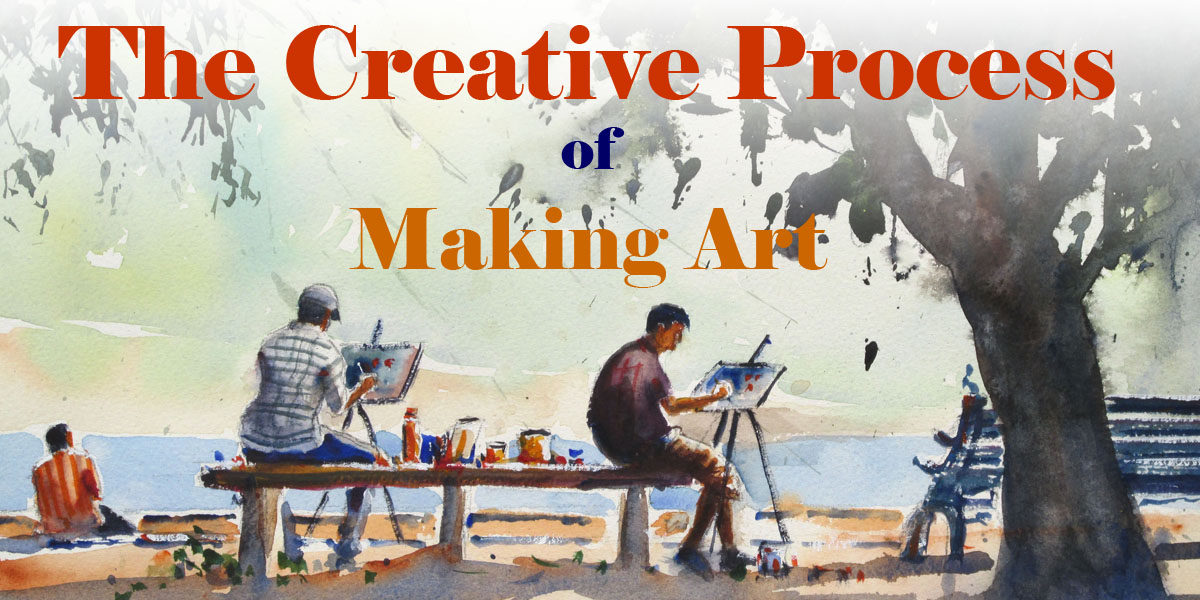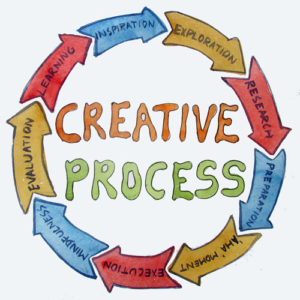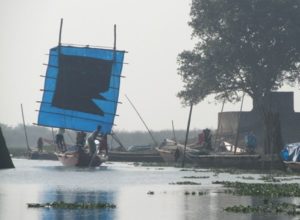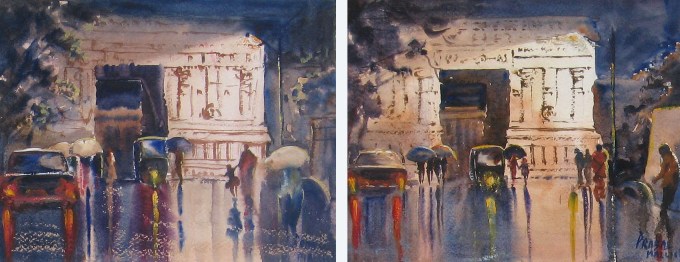Two Days of our Sundargarh sketching trip had gone in a jiffy. The first day it was all about Sundargarh town and the second day the beauty of Tangarmunda, its people and the food had left lasting impression on me. Everything from how the plan changed from Sambalpur to Sundargarh, our journey from Bhubaneswar to Sundargarh and the sketching experience had just been perfect. But the best was yet to come.
Read the first part of Sundargarh Sketching Trip here
Surreal Sarabgarh
09 Jan 2019
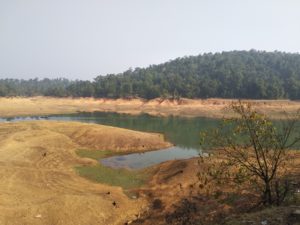
Kedar had planned a grand finale to our Sundargarh Sketching Trip. The destination was Sarabgarh Dam, which is approximately 30 kilometers from Sundargarh town. It was also the second day of the bundh which meant we had to leave the town early in the morning once again. By now we were quite used to the chill of the hard winter and got ready well in time. But our auto guy Ashish did not arrive. He had misplaced the auto keys and just could not find it. Due to bundh getting another vehicle was not going to be easy and almost impossible so early in the morning. But somehow none of us felt flustered. Probably the sequence of events in the past few days had given us a sense of calmness. Somehow we knew things will work out. And then suddenly Ashish arrived in his auto. He had managed to start his auto with the help of some jugaad. Wasting no time we got into the auto and though a little late our journey to Sarabgarh dam finally started. But the challenges were not over yet.
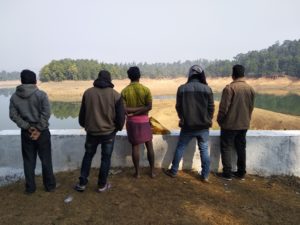
In a few minutes after going out of town, Ashish realized that he was out of gas. Being a day of complete shut down he was not hoping to find any gas station open. But once again we all were at peace and were just not getting worried and asked him to keep moving. And again as if a miracle there was this small gas station in the middle of nowhere waiting for us. Ashish was the happiest one at that point, but his joy lasted only a few seconds when he realized that he did not have the key to open the lock of the gas tank. But the trend for the day continued and a solution presented itself no later than the problem was encountered. One of the gas station staff tried to open the lock with his bike key and yes you guessed it right. The lock opened as if it was the original key. Sometimes reality is actually stranger than fiction.
Only when we reached Sarabgarh dam that we realized why Kedar had planned this as our ultimate sketching destination. This place was a paradise. It was something out of a fairy tale. Sarabgarh was Surreal, quiet and enchanting. As we were soaking up the beauty, Kedar had already started looking for lunch arrangements. We happened to find two villagers passing by and Kedar asked them about eateries in the vicinity. As expected there were none and out of the blue Kedar asked them if they could prepare lunch for us. We had just met these two people in the middle of nowhere for the first time in our lives and Kedar was expecting them to prepare lunch for us! But the biggest divine intervention was just about to happen. The elder of the two instructed the younger man to get lunch prepared at his home. We just could not believe our luck. On top of that, the lone fisherman who had caught some fresh fish from the dam also presented himself to us. It was as if Biswajit’s prayer was answered. He was craving for fish earlier during our journey to Sarabgarh. I wanted to pinch myself to check if I was dreaming. But Sarabgarh was no less than a dream.
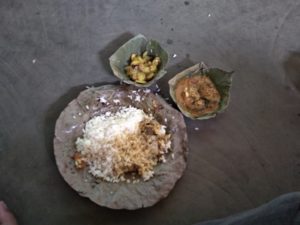
Soon we found a great place to sketch. But problem with beautiful views is that…….. they are beautiful. This beauty can sometimes be overwhelming to the extent that one can easily get carried away by it and not pay attention to some basics of a painting like composition, abstraction and design etc. And somewhere in the middle of the painting when things don’t seem to work out you suddenly realize this and more often than not you feel like a fool. My first work at Sarabgarh dam was all about this struggle. What started in the most enthusiastic ways soon turned out to be a little more than a square foot of confusion and exasperation. But I did carry on and finished the painting. In the end it turned out to be one of the most popular works of the sketching trip; yet another miracle of the day. And for the second work I turned 180 degrees from my place and had this beautifully designed and abstracted scene in front of me. It was crying out to be painted and I obliged. And soon it was time for lunch and as we made way to our vehicle there was good news waiting for us.
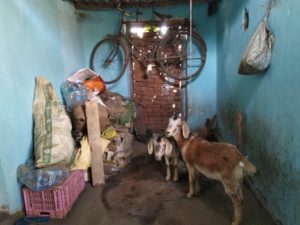
Ashish had found the keys. The keys were there in one of the pockets of his jacket while he had been looking everywhere for it. As our vehicle moved to our lunch destination he looked visibly upbeat and we too, were happy for him. As per our host’s instruction we had to drive up to Masabira village and then all we had to do was to ask anyone where Chuin’s house is. And that is exactly what we did and landed up at our host Chuin aka Guru’s place. Guru was not at home and we were a little hesitant to get inside the house, but Guru’s family welcomed us and served us lunch consisting of Rice, Fish curry and Aloo Bhaja. Sitting on mud floor smeared with cow dung under the thatched roof and having food so lovingly served to us on plates made up of Sal leaves in a person’s house we had met a couple of hours earlier and in a place that seemed to exist in a parallel reality, I could not help but feel a sense of gratitude. The food cooked so simply tasted like nothing I had eaten before, the modest house felt like the most luxurious mansion, the strangers seemed like family. A remote tribal village in Sundargarh, which I had never even heard of, felt like home. Surely this had to be the biggest miracle of the day.
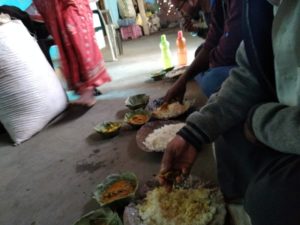
All good things eventually come to an end. We had to start our journey back to Sundargarh town in some time and had about an hour in our hands. So back at Sarabgarh dam I sketched vigorously. I wanted to make most of the time I had at Sarabgarh. I did two sketched at the same time, working intermittently of each of them painting as fast as I could. And then finally it was time to return.
The next morning we had to start our journey back to Bhubaneswar.
A Fitting Closure
10 Jan 2019
The previous night Ashish had made sure to keep his keys at the right place and was there on time to drop us at the bus stop. We caught the first bus to Sambalpur at 6:00 AM which reached its destination at half past eight. On reaching Sambalpur we moved straight to the temple of Samaleswari or Samalai, the residing goddess of western Odisha. Any trip to western Odisha is not complete without a visit to Samali temple. So we had decided to take the morning bus to Sambalpur which would give us about 5 to 6 hours before our train left from Sambalpur station. At the temple premises we took a room at the guest house and got ready for the day.
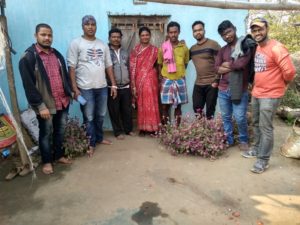
The temple was relatively less crowded and we had a good darshan of the goddess. After the darshan and some hot and delicious breakfast from a street vendor it was time to sketch again. As we settled into different corners of the temple premises for sketching the physical exertion of the last few days was starting to take its toll. My body just wanted to rest. But my mind was getting excited at the prospect of sketching the beautifully play of light and shade of Samali Temple. I somehow forced myself to focus and started sketching. And as the sketch slowly started to develop the physical exertion also went away. As the scene was well lit I was using a lot of primary unbroken colors in the sketch and probably those colors were working their magic on me.
Or may be it was the blessing of the goddess which had been guiding us through the last five days.
Sketching session was followed by delicious temple lunch prasad. And after a short nap it was time to return back.
Sundargarh has been a revelation. It was pitch perfect in everything an artist could ask for. The beauty of nature, the simplicity and warmth of the people, the simple nutritious and mouth watering food and a feel of transcendence in the air; it had everything. But there was even a bigger revelation. It was about the working of nature.
Nature has a rhythm. Sometimes we are lucky enough to get aligned to this rhythm in mind body and spirit. And when this happens everything that a person needs just present themselves to her… at the right time. All one need to do is to have faith in this force and walk on. And what follows is what every person truly wants on this earth.
True Bliss!
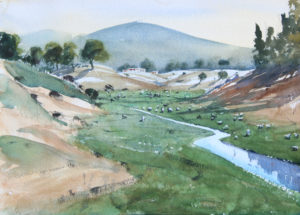
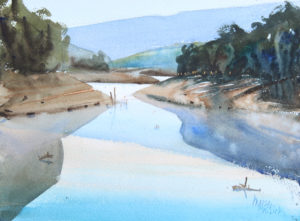
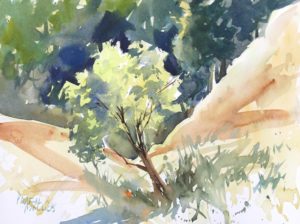
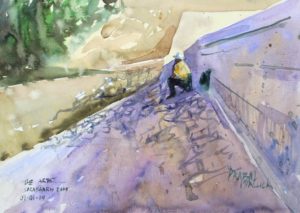
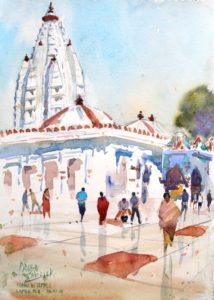

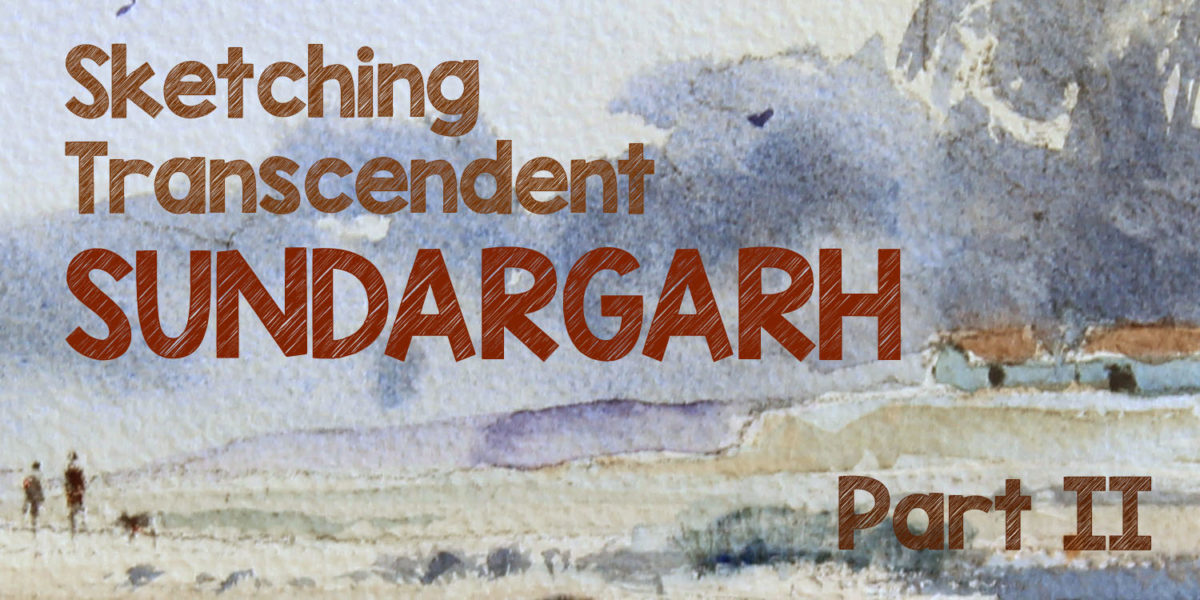
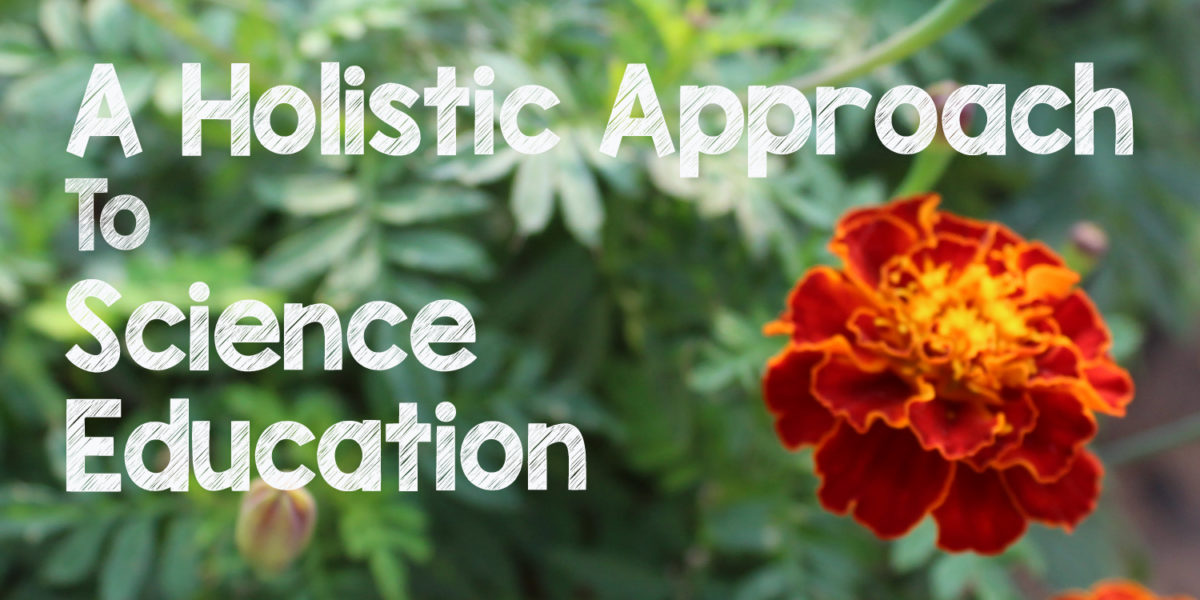
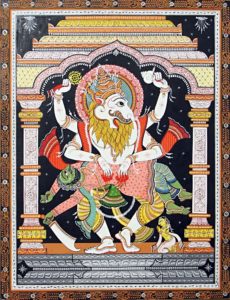

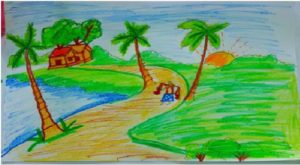
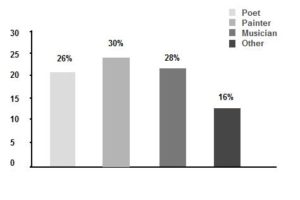
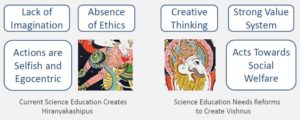
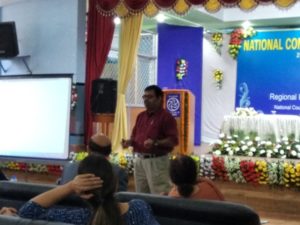
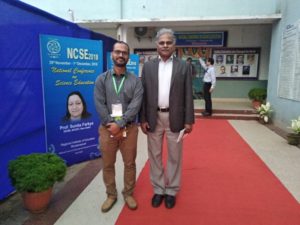
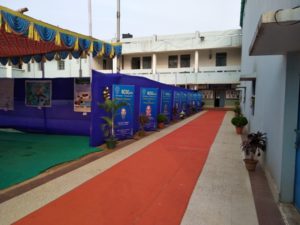
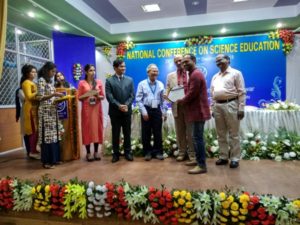
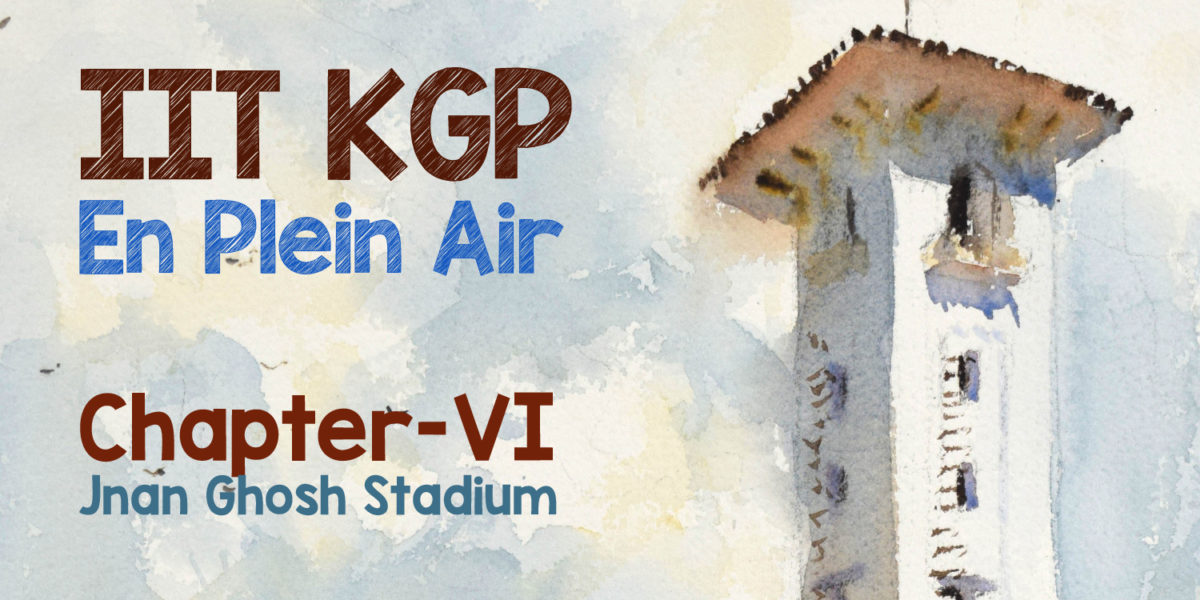
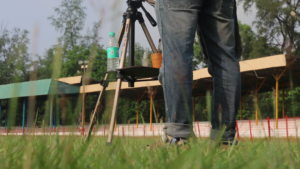
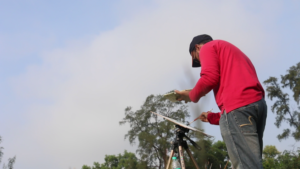
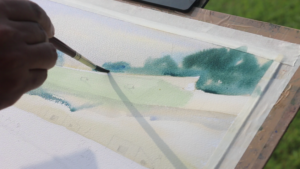
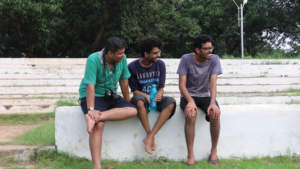
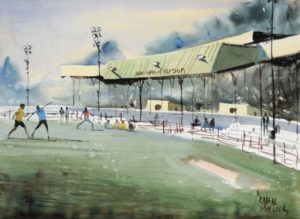
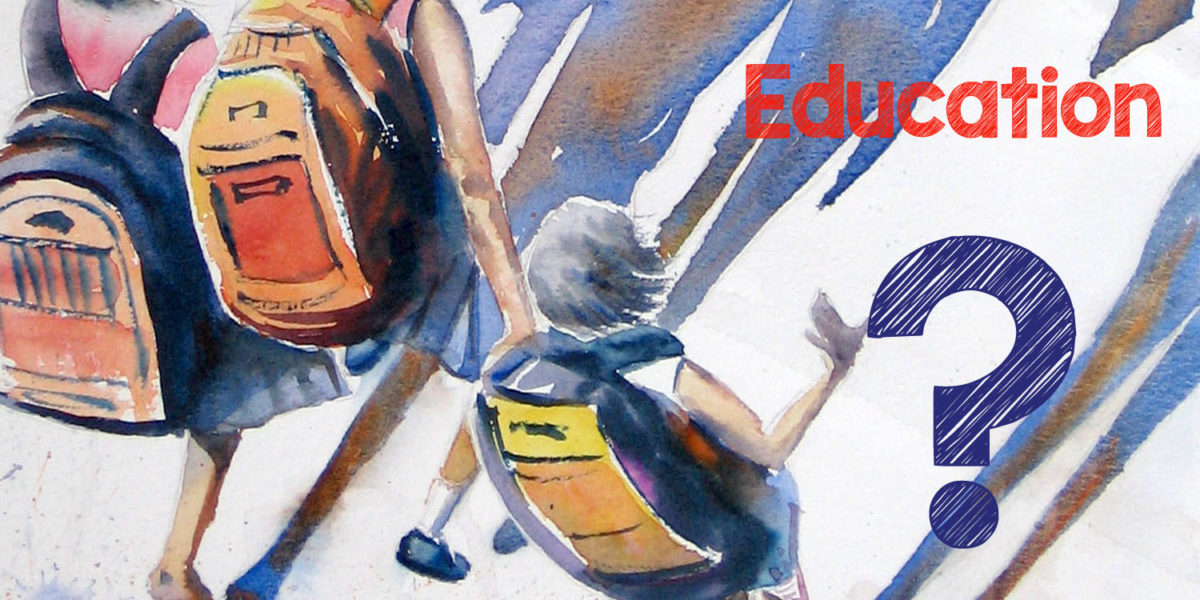
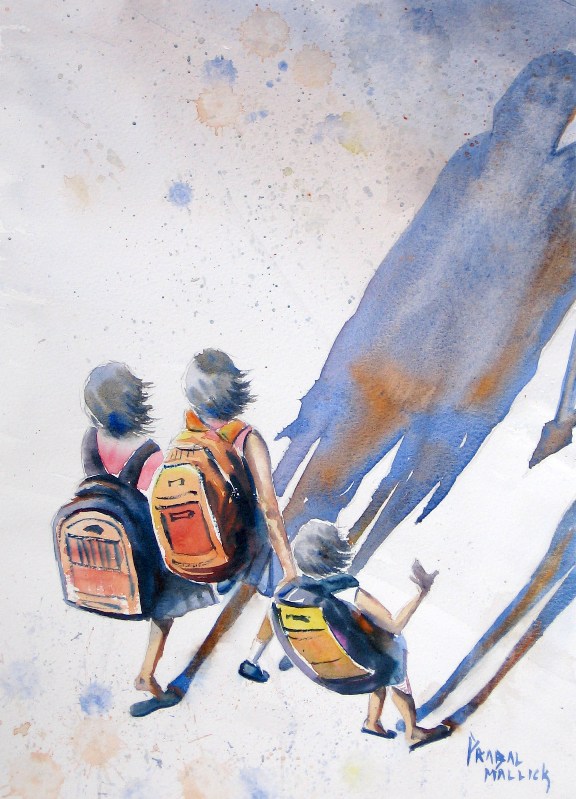
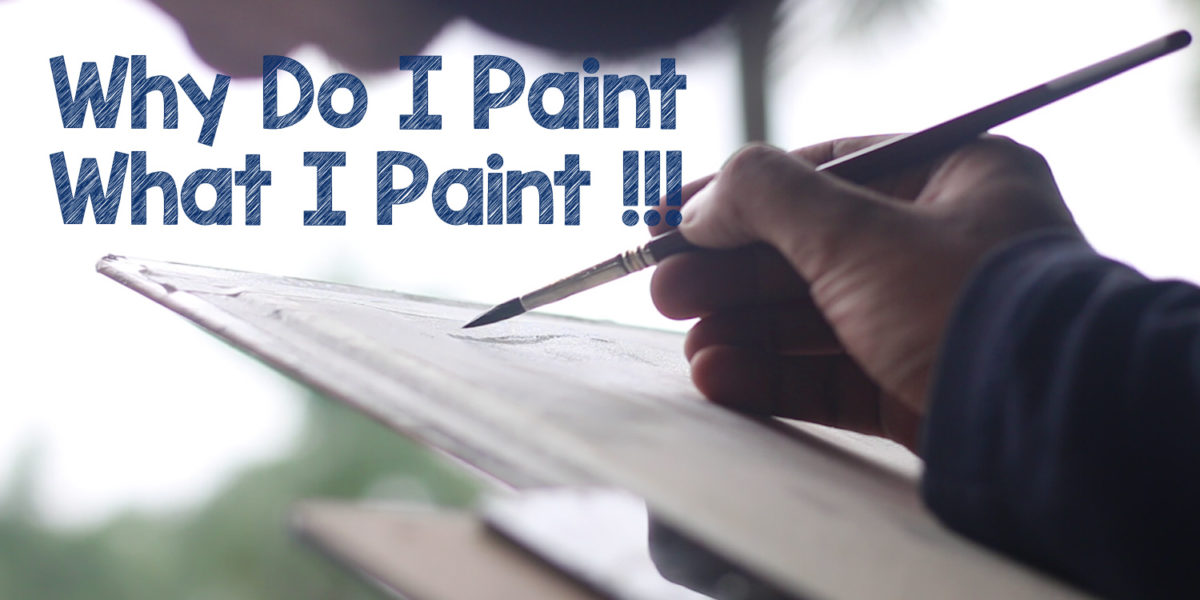
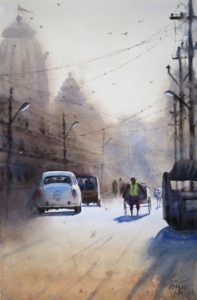


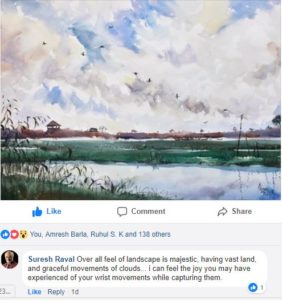
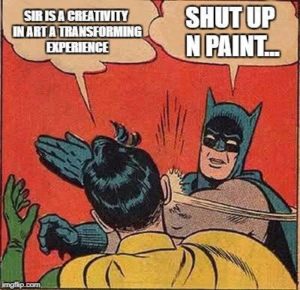
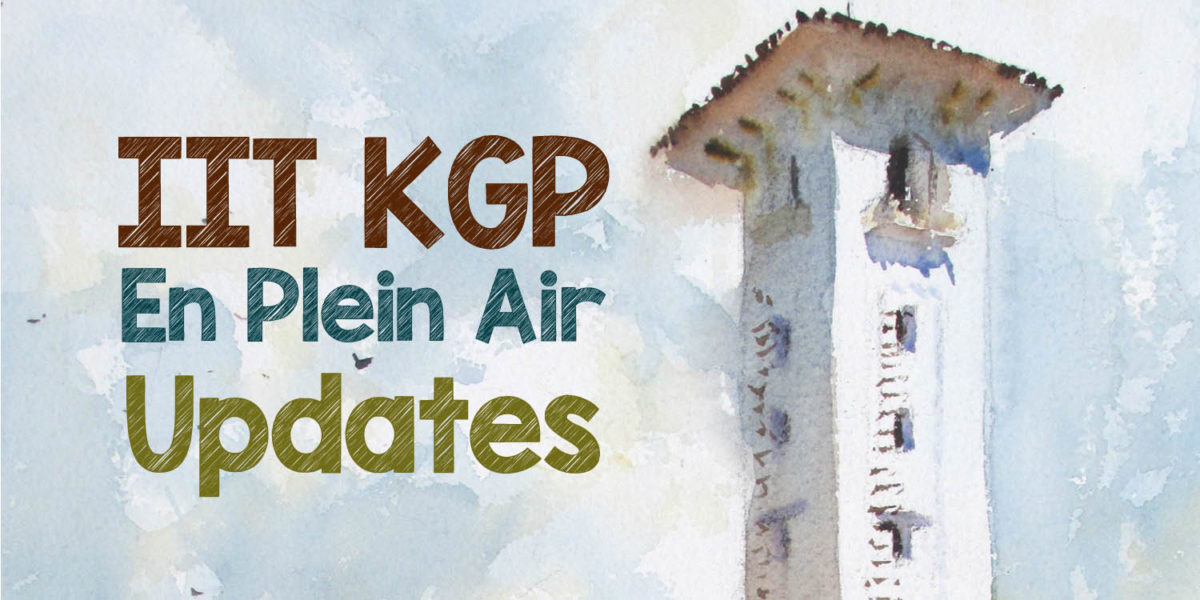
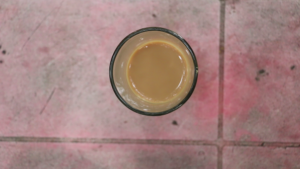 On 21st July 2017 when I set out to IIT Kharagpur for
On 21st July 2017 when I set out to IIT Kharagpur for 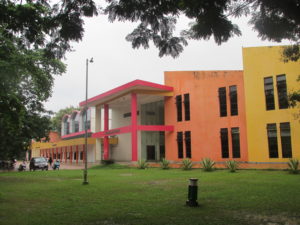 First things first. If you have not been to KGP in a while the new look campus would hit you. There are flawless roads with cycle tracks on each side and separate places marked for parking with proper signage everywhere. A lot of new state of the art buildings have come up where classes are held. Technology guest house has been expanded and someone told me it has 3 start rating. Hostels have been extended. There are new buildings and new floors. A few halls now have 4 floors which also including Azad hall. The mess has become bigger. Rotis are now made by a huge roti making machine in the mess. Gymkhana too has a new building. The area behind gymkhana has been developed into a lovely park. There is so much change in the campus in terms of infrastructure, its almost unbelievable. At the same time greenery of the campus is intact and did not look like it has been compromised with.
First things first. If you have not been to KGP in a while the new look campus would hit you. There are flawless roads with cycle tracks on each side and separate places marked for parking with proper signage everywhere. A lot of new state of the art buildings have come up where classes are held. Technology guest house has been expanded and someone told me it has 3 start rating. Hostels have been extended. There are new buildings and new floors. A few halls now have 4 floors which also including Azad hall. The mess has become bigger. Rotis are now made by a huge roti making machine in the mess. Gymkhana too has a new building. The area behind gymkhana has been developed into a lovely park. There is so much change in the campus in terms of infrastructure, its almost unbelievable. At the same time greenery of the campus is intact and did not look like it has been compromised with.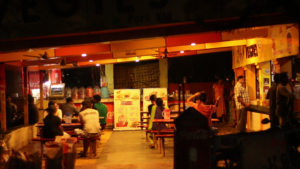 And to top it all there is a law school and people are studying stuff like economics. In humanities there are credit subjects like visual communication and in the law school there are courses like international environment laws which anyone can take up as an elective. Now I really loved this development. IIT KGP is now more like an university where individuals are given enough opportunities to realize their true and full potential. The way things are developing we may soon see a school of fine arts and a school of performing arts soon in the campus.
And to top it all there is a law school and people are studying stuff like economics. In humanities there are credit subjects like visual communication and in the law school there are courses like international environment laws which anyone can take up as an elective. Now I really loved this development. IIT KGP is now more like an university where individuals are given enough opportunities to realize their true and full potential. The way things are developing we may soon see a school of fine arts and a school of performing arts soon in the campus.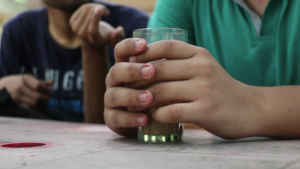 Student life is probably as hectic as it was 15 years earlier if not more. One good thing is classes start at 8:00 AM as opposed to 7:30 AM. But still there is a mad rush to get to classes on time. Life still revolves around projects, credits, profs, classes, labs, presentations, apping, mugga, exams, CAT mock tests. But what is heartening to see is the kids are doing much more than all this. There is an art club called SPECTRA and students do some really amazing works of art. They learn from each other, from external faculty, internal faculty and they even put up an art exhibition every year. There is a film making club called TFPS and they come up with short films every now and then. My interaction was mostly with TFPS as they were involved in IIT-KGP En Plein Air project. And I was amazed by the talent each of them had and how they are channelizing it into creative domains.
Student life is probably as hectic as it was 15 years earlier if not more. One good thing is classes start at 8:00 AM as opposed to 7:30 AM. But still there is a mad rush to get to classes on time. Life still revolves around projects, credits, profs, classes, labs, presentations, apping, mugga, exams, CAT mock tests. But what is heartening to see is the kids are doing much more than all this. There is an art club called SPECTRA and students do some really amazing works of art. They learn from each other, from external faculty, internal faculty and they even put up an art exhibition every year. There is a film making club called TFPS and they come up with short films every now and then. My interaction was mostly with TFPS as they were involved in IIT-KGP En Plein Air project. And I was amazed by the talent each of them had and how they are channelizing it into creative domains.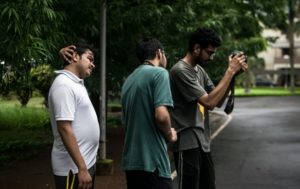 I was even lucky to meet few individuals in final year who have done their internship in media houses as they want to pursue their field of interest. One of them was already doing some work for a digital media company designing posters for them. These I believe are great signs of the times we live in.
I was even lucky to meet few individuals in final year who have done their internship in media houses as they want to pursue their field of interest. One of them was already doing some work for a digital media company designing posters for them. These I believe are great signs of the times we live in.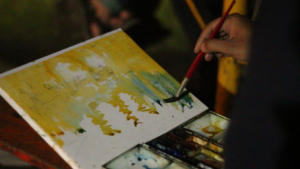 Vegies/Eggies and Harrys (Now called Tikkas) continue to be the lifeline of students. Harrys breakfast consisting of dal puris, sabzi, coffee and rasagola though has become expensive (Now it comes at approx Rs 40/-), still feels like one of the best breakfast that one could ever have sitting under a banyan tree in the company of friends and birds. Little sisters restaurant is now a favorite Friday night hangout place for students and business for LS is booming on weekends.
Vegies/Eggies and Harrys (Now called Tikkas) continue to be the lifeline of students. Harrys breakfast consisting of dal puris, sabzi, coffee and rasagola though has become expensive (Now it comes at approx Rs 40/-), still feels like one of the best breakfast that one could ever have sitting under a banyan tree in the company of friends and birds. Little sisters restaurant is now a favorite Friday night hangout place for students and business for LS is booming on weekends.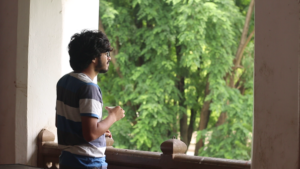 Unfortunately I did not get a chance to go to chhedis and hence no updates from there. A new canteen has come up in Neheru museum (Kali Da). Situated on the first floor of museum it is lined with arches overlooking the pristine surroundings dotted with very old banyan trees. There is a certain old world charm about this place and its a place for the romantics for sure. One could write poetry just sitting here. And hence I had to paint this place and I am glad I could paint here.
Unfortunately I did not get a chance to go to chhedis and hence no updates from there. A new canteen has come up in Neheru museum (Kali Da). Situated on the first floor of museum it is lined with arches overlooking the pristine surroundings dotted with very old banyan trees. There is a certain old world charm about this place and its a place for the romantics for sure. One could write poetry just sitting here. And hence I had to paint this place and I am glad I could paint here.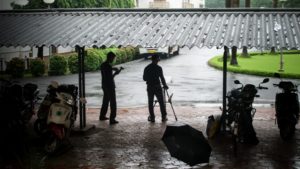 I reached KGP on 21st July (Friday). The plan was to shoot as much as possible on the weekend (Saturday and Sunday). The first place that we had planned our shoot was in Jnan Ghosh stadium on Saturday early morning. With butterflies in my stomach I hardly got any sleep on Friday night and could not wait to paint in the morning. But as luck would have it, there was a heavy downpour on Saturday morning. And the weather forecast said it was going to be raining continuously for the next 5-6 days. Talking of good starts, this situation really did not qualify to be one.
I reached KGP on 21st July (Friday). The plan was to shoot as much as possible on the weekend (Saturday and Sunday). The first place that we had planned our shoot was in Jnan Ghosh stadium on Saturday early morning. With butterflies in my stomach I hardly got any sleep on Friday night and could not wait to paint in the morning. But as luck would have it, there was a heavy downpour on Saturday morning. And the weather forecast said it was going to be raining continuously for the next 5-6 days. Talking of good starts, this situation really did not qualify to be one. 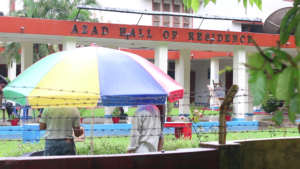 But we did shoot that day albeit in a different location. Chemical department cycle stand overlooks Neheru Museum. And since it had protection overhead our first shoot happened there. Hijli detention camp was the first thing I painted and the rain just added so much character to the scene. It was as if nature created the scene especially for me to paint. Starting shoot at the old building was symbolic in a way because this is where IIT Kharagpur was started.
But we did shoot that day albeit in a different location. Chemical department cycle stand overlooks Neheru Museum. And since it had protection overhead our first shoot happened there. Hijli detention camp was the first thing I painted and the rain just added so much character to the scene. It was as if nature created the scene especially for me to paint. Starting shoot at the old building was symbolic in a way because this is where IIT Kharagpur was started.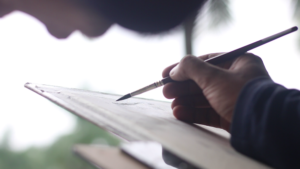 The next day we shot at Azad hall where the ex hall president Sashwat arranged a big umbrella for me so that I could paint under it in the rain. And thus the ball kept rolling. I was in a hurry to cover all places. But universe had other plans. It was creating the right ambiance for me to paint at different location. But I had to be patient. The footage of one of the places we shot at got deleted by accident. But it was a blessing in disguise because I really did not like what I had painted
The next day we shot at Azad hall where the ex hall president Sashwat arranged a big umbrella for me so that I could paint under it in the rain. And thus the ball kept rolling. I was in a hurry to cover all places. But universe had other plans. It was creating the right ambiance for me to paint at different location. But I had to be patient. The footage of one of the places we shot at got deleted by accident. But it was a blessing in disguise because I really did not like what I had painted 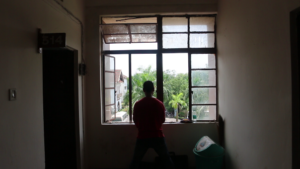 there in the first place. So we shot again and this time the painting was perfect. The director of the film Lokesh had mentioned one day that in a film director is the God. But in a documentary God is the director. And the whole experience of painting and shooting at IIT KGP turned out to be such that I had to agree with him.
there in the first place. So we shot again and this time the painting was perfect. The director of the film Lokesh had mentioned one day that in a film director is the God. But in a documentary God is the director. And the whole experience of painting and shooting at IIT KGP turned out to be such that I had to agree with him.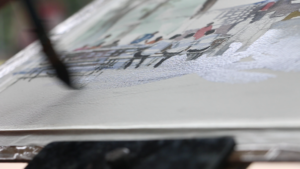 I returned back from KGP on 31st July. The film now is in editors hands. Additional footage is also being captured in parallel. Background score for the film also is yet to be sorted out. At this point everyone wants to know when the film will be completed. Honestly I also cant tell. But I guess it will take at least another 30-50 odd days for sure.
I returned back from KGP on 31st July. The film now is in editors hands. Additional footage is also being captured in parallel. Background score for the film also is yet to be sorted out. At this point everyone wants to know when the film will be completed. Honestly I also cant tell. But I guess it will take at least another 30-50 odd days for sure.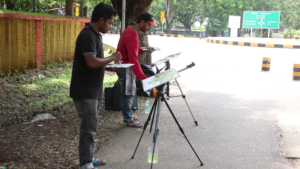 Not everyone gets an opportunity to go back to IIT KGP campus to experience KGP life again. But I did and through me hopefully many of you would get a slice of the cake. I relived some old memories and created new memories. And all that probably has seeped into my works that I created there. Hopefully they will touch a chord somewhere.
Not everyone gets an opportunity to go back to IIT KGP campus to experience KGP life again. But I did and through me hopefully many of you would get a slice of the cake. I relived some old memories and created new memories. And all that probably has seeped into my works that I created there. Hopefully they will touch a chord somewhere. And lastly I would like to thank TFPS guys and everyone who made my experience at IIT KGP such a memorable one and also those who have supported the
And lastly I would like to thank TFPS guys and everyone who made my experience at IIT KGP such a memorable one and also those who have supported the 